11 Beginner Yoga Poses Everyone Pretends To Know
Remember when you resolved to do more yoga? And then you sat at the back of a yoga class as the teacher said ridiculous things like "juice your spine" and you wondered what the heck you were doing?
Yeah, we're here to help.
Yoga doesn't need to be shrouded in mystery. This week, we caught up with Lisa Sochocki, owner of Yoga Loft Hawaii on the island of Oahu, to talk plainly about how to achieve each basic yoga pose with perfection.
Sochocki has spent the last 16 years practicing yoga around the world and the last 10 teaching it. She has helped hundreds of aspiring yogis turn their awkwardly stiff downward dogs into seamless standing splits, and she knows every mistake a rookie yogi will make on the mat.
Love HuffPost? Become a founding member of HuffPost Plus today.
"A lot of people think that in order to start doing yoga, you have to be super flexible. But the reality is that everyone has to start somewhere," Sochocki told The Huffington Post. "And it all usually starts with the first breath. If you remember to breathe, then everything else will fall into place."
So take a breath, relax and let this blissful yogini walk you through all the beginner's yoga poses you need to know to master your practice. Your computer-hunched spine will thank you.
Hold each pose for three to five deep and slow breaths, in and out of your nostrils.
1. Mountain Pose (Tadasana)
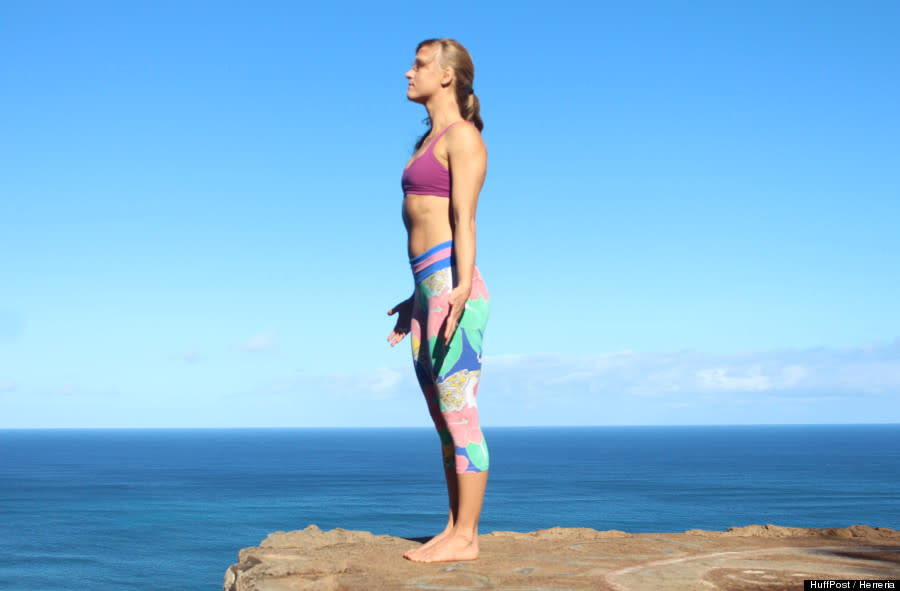
Stand tall, spine straight with feet parallel and big toes touching. Look straight ahead.
Common mistakes: The ribs and butt should not stick out too far. Try to keep your spine, from the top of your head to your tailbone, in one straight line.
Sochocki says: "Unlike regular standing, here you stand with a purpose, feeling the four corners of your feet, lifting up the knee caps, engaging the legs, drawing the the tailbone down and lifting the belly button in and up. Soften the shoulders down the back and turn the palms to face forward, imagine you have heavy rocks in your hands. Look straight ahead and feel the power of the Mountain!"
2. Chair Pose (Utkatasana)

Knees bent over the ankles, thighs as parallel to the floor as possible. Torso should form a right angle over your thighs. Move the feet closer together for a more advanced pose. Inhale as you raise your hands up.
Common mistakes: Knees should not go past the toes.
Sochocki says: "Place more weight over the heels to pull the knees away from hovering over the toes."
3. Forward Fold (Uttanasana)
(Top photo is for beginners, bottom photo is for advanced students.)

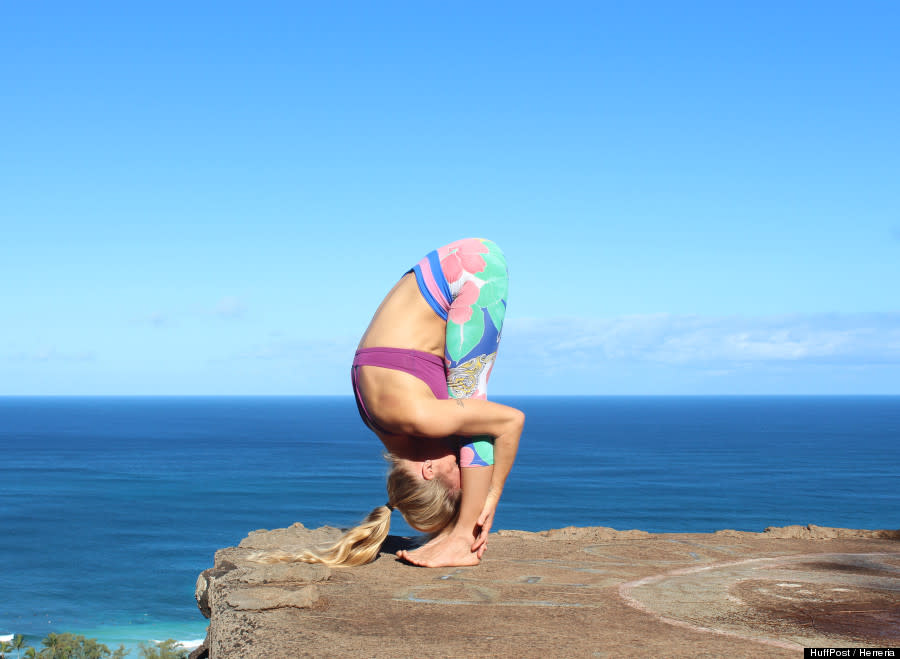
This pose opens up the back of the legs, allows the spine to decompress and lets fresh blood move from the heart and into the head.
Start in mountain pose. Hinge from the hips on an exhale and fold over forward, keeping the spine as straight as possible. Let the head hang heavy, and relax the jaw. Keep feet hip-width apart for beginners or touching for intermediate/advanced students.
Common mistakes: A straight spine is more important than having straight legs. Bend your knees as much as needed to keep a straight spine with your chest touching your thighs.
Sochocki says: "Consistency in yoga is important and over time, the back of the legs will open in forward fold. Keep the knees soft, and don't lock them."
4. Downward-facing Dog (Adho Mukha Svanasana)
(Top photo is for beginners, bottom photo is for advanced students.)
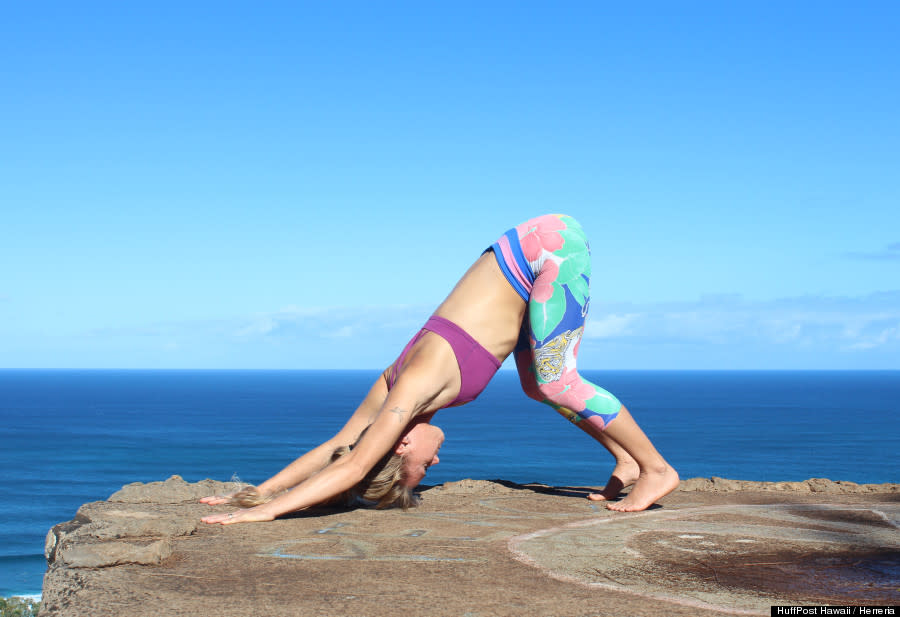

This inversion opens the entire body. From plank position, with your feet hip-width apart and hands shoulder-width apart, lift your hips toward the ceiling on an exhale until your body makes an inverted "V." Eyes are looking between the legs or toward the belly. Pull the belly and ribs in.
Common mistakes: People with tight hamstrings and calves tend to form boxy poses. To correct this, bend the knees more, and draw the chest toward the tops of the thighs, pressing your hands firmly against the floor to pull the hips back.
Sochocki says: "It is more important to keep your back straight and less important to keep the legs straight." You shouldn't be afraid to bend the knees or lift the heels if needed. "Imagine that you are a fish and you've been hooked at the tailbone and are being pulled back to the boat. This will help lift the hips back and up."
5. Warrior One (Virabhadrasana 1)
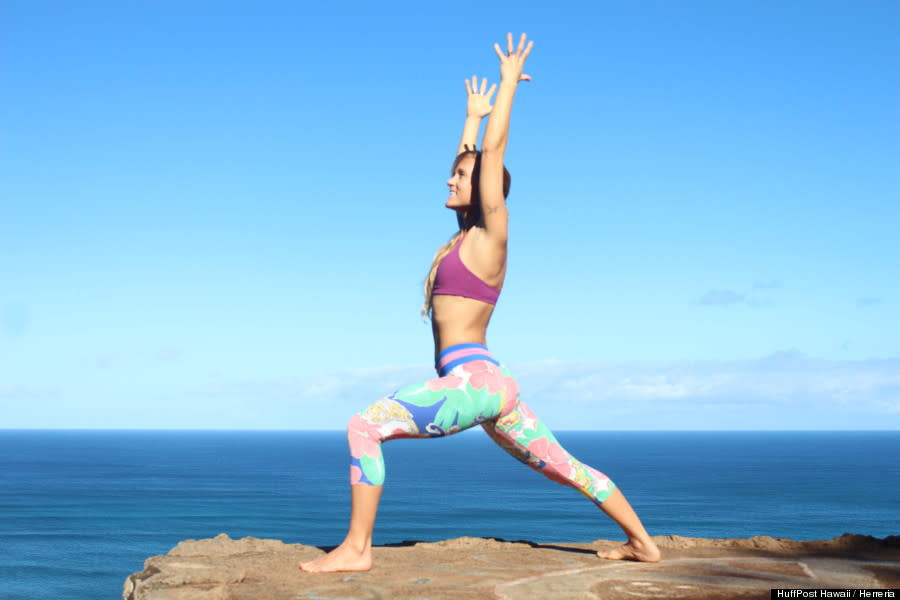
From downward-facing dog, step your right foot forward between your hands, turn your left heel in, and raise your torso and arms up on an inhale. The front foot's heel should line up with the back foot's arch, with the front of the knee directly over the ankle. Face both hips forward, draw the tailbone down, and pull the ribs in. Repeat pose on the opposite side of the body.
Common mistakes: The back hip should be facing forward and not outward, and the back foot should be closer to a 45-degree angle, not a 90-degree angle.
Sochocki says: "Imagine both your hips are headlights. You want both headlights facing forward."
6. Warrior Two (Virabhadrasana 2)

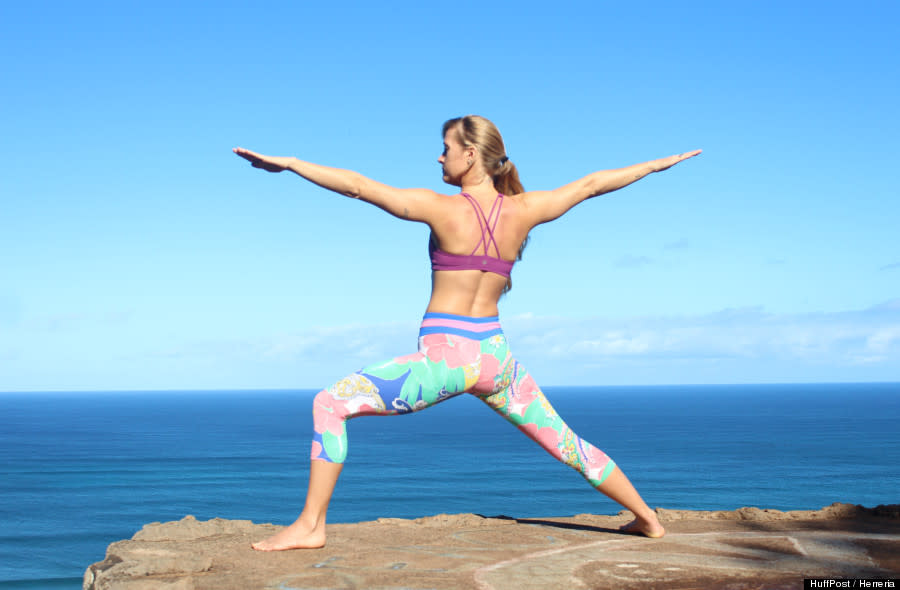
Similar to warrior one, but with arms stretched out in opposite directions, parallel to the floor and in line with the shoulders. Raise arms and torso on an inhale. Back foot should be at a 90-degree angle, and front thigh should be parallel to the floor, with the front of the knee directly over the ankle. Eyes should look out over middle finger. Repeat pose on the opposite side of the body.
Common mistakes: The butt or belly should not stick out, and there should be no arch in the lower back. Foot alignment is also often wrong. Make sure that your front foot's heel aligns with the back foot's arch.
Sochocki says: "Imagine you are spreading your mat apart. To align your hips, place your hands on your hips to make sure you're not leaning too much on one hip."
7. Triangle Pose (Trikonasana)
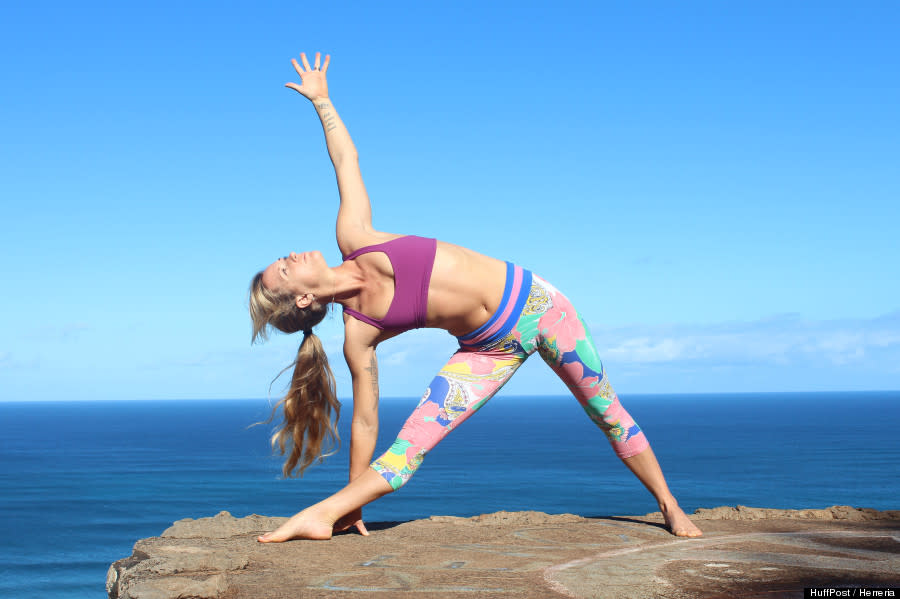

Step feet wide apart, creating a triangle from your feet to your pelvic bone. Start with turning one foot out by 90 degrees and the other inward by 15 degrees. Stretch arms out in line with the shoulders, and, on an exhale, rotate torso toward the outward-turned foot. Fingers should touch the shin for beginners or slightly touch the floor for advanced. The other arm should be reaching up with eyes looking at the raised hand, neck kept long and away from the shoulders. Shoulders and arms should form one line.
Common mistakes: The front hip should not jut out, and the back hip should not drop down.
Sochocki says: "To ensure good alignment, go into the pose very slowly."
8. Child's Pose (Balasana)
(Top photo is for beginners, bottom photo is for advanced students.)
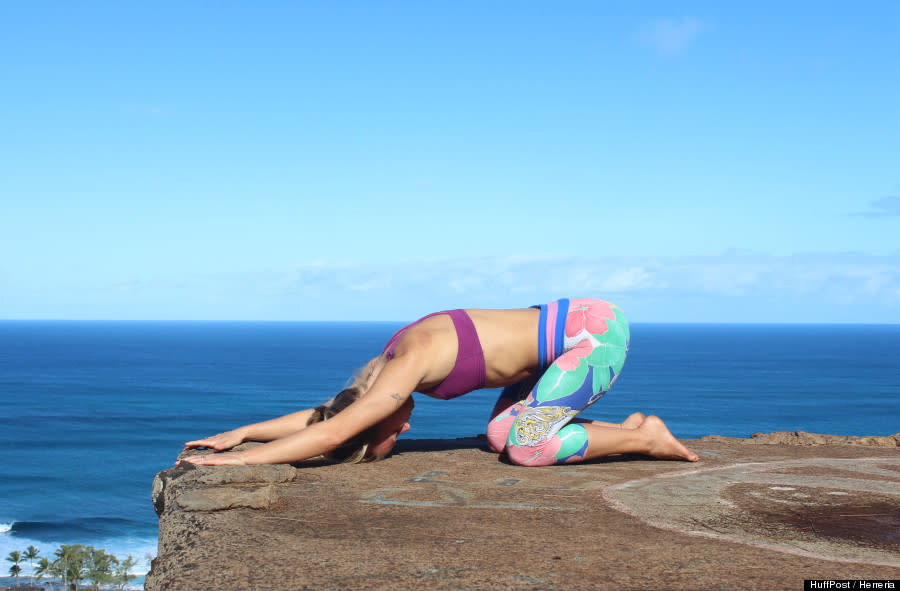
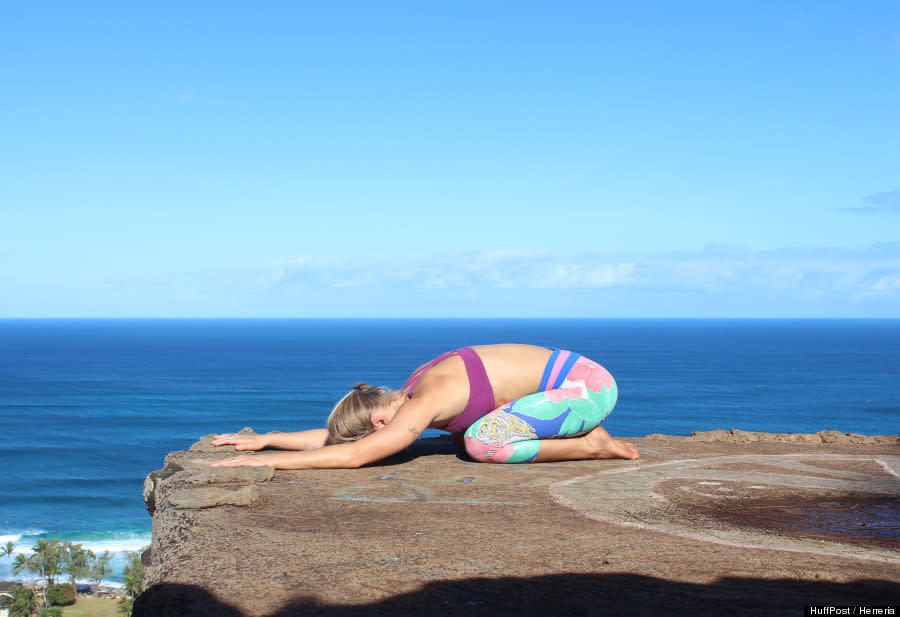
Child's pose is a pose of surrender. Starting from a kneeling position, with toes touching and knees as wide as the shoulders, draw your hips down to your heels as your arms extend forward on the floor and your forehead lowers to the ground. Close your eyes and let your forehead rest on the ground. Breathe in whichever manner is comfortable to you.
Sochocki says: "There is no wrong way to do Child's Pose. However, if you have tight hips, it can be helpful to place a blanket or pillow between your hips and heels and a block for your forehead."
9. Baby Cobra (Ardha Bhujangasana)
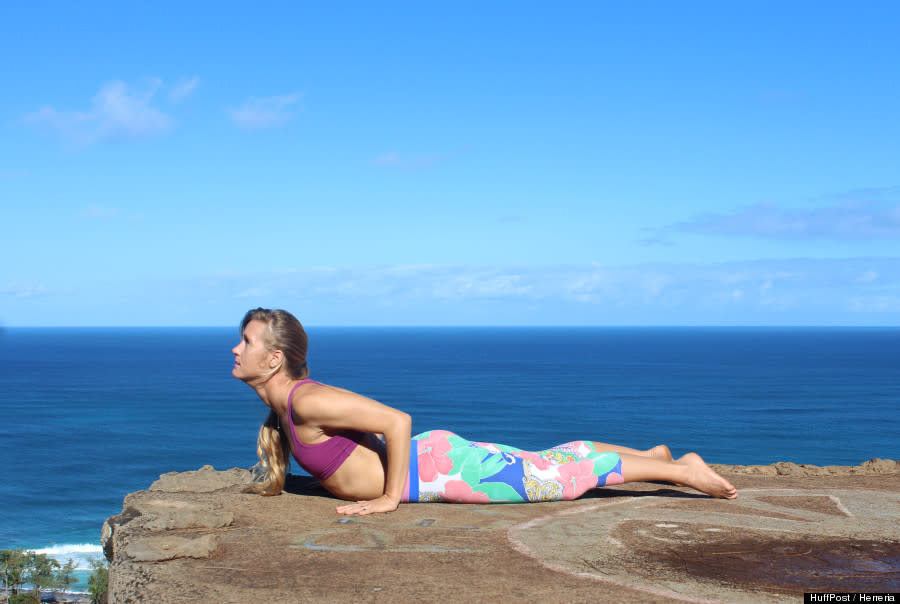
This pose is done on the belly, with the pubic bone and the tops of the feet pressing into the ground. Feet are as wide as the hips and straight back. Hands are resting beside the rib cage, and elbows are squeezed back, reaching toward one another. Using the strength in the lower lumbar spine, peel the chest and upper ribs off the floor. Lift up on an inhale, take a few breaths, and lower down on an exhale.
Common mistakes: Hands should not be in front of the shoulders, and the shoulders should not be by the ears. To correct this form, draw the shoulders down the back, and pull the shoulders away from the ears.
Sochocki says: Your elbows should be at a 45 degree angle and you should use your lower back -- with minimal push from your hands -- to pull your torso off the floor.
10. Seated Twist with Leg Extended (Marichyasana)

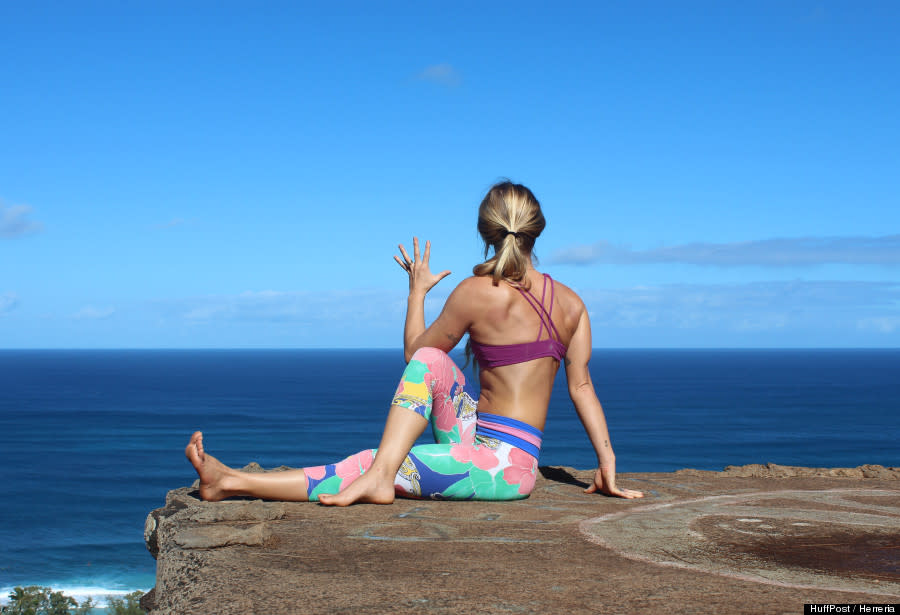
The seated spinal twist neutralizes the spine. Start from a seated position, with butt on the ground and both legs parallel in front of you. Extend your left leg straight out, and flex the foot. Bend your right knee, and cross your right foot over the extended left leg. Left elbow pushes against the outside of the right knee, and right hand is placed on the floor on the right side of the body. Right hand should be planted behind the right side of the spine, supporting it. Look over the shoulder or as far as the neck allows. Repeat pose on the opposite side of the body.
Common mistakes: Do not round your back. Lengthen your spine by lifting your back up. Make sure your back hand is helping you life the spine up.
Sochocki says: "Exhale as you twist your spine. Inhale to create the space [in your torso] and the exhale will move you deeper into the space you've created."
11. Upward-facing Dog* (Urdhva Mukha Svanasana)
*Our yogi says it can be dangerous to assume that the upward-facing dog is a beginner's pose. It is, in fact, an intermediate to advanced pose because it is a deep back bend that requires a lot of power. Sochocki suggests that beginners start with baby cobra and build their way up to upward dog.
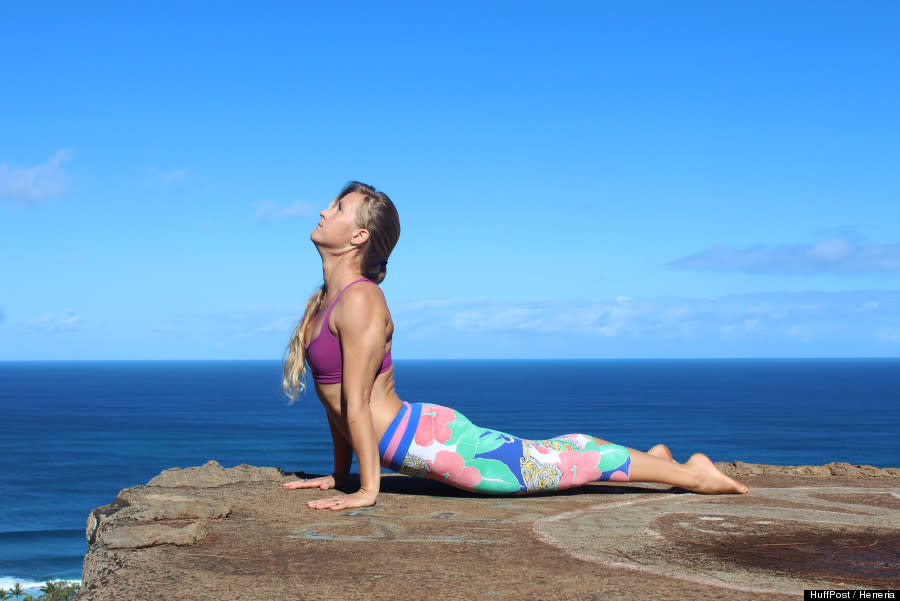
From the plank position, with feet hip-width apart and arms shoulder-width apart, exhale and use your arms to slowly lower your body down until your elbows form a 90-degree angle. Use your toes to tilt your body forward and roll over your toes so the tops of your feet are flat on the ground. On an inhale, straighten your elbows so your entire torso, knees and thighs are lifted from the ground. Your hands and feet should be the only parts of your body touching the ground. Look slightly upward, past the tip of the nose. Exit the pose on an exhale.
Common mistakes: "I most commonly see students go into this pose before their back is ready for it. You can tell when their shoulders are high and near the ears. I recommend that beginners start with a cobra pose, closer to the floor. Cobra has little to no weight in the hands and will slowly build up the strength in the back."
Sochocki says: "For those who are determined to master the up dog, make sure you press firmly down with the feet and keep drawing the chest through the arms. Lift from the center of the heart while pulling your shoulders down your back."
Antigravity Yoga

Tantrum Yoga
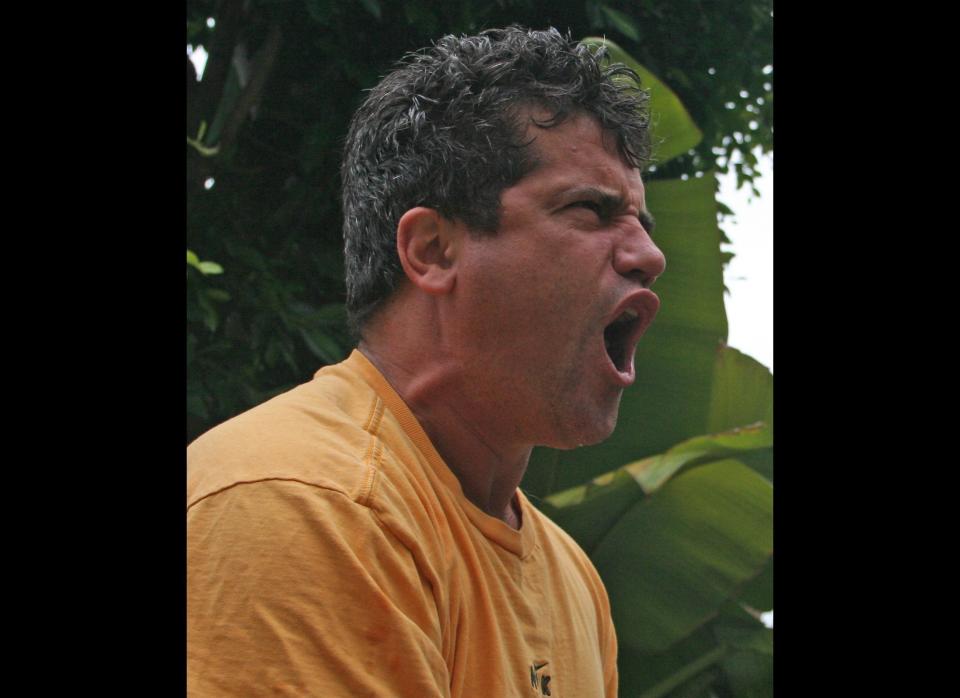
Wheelchair Yoga
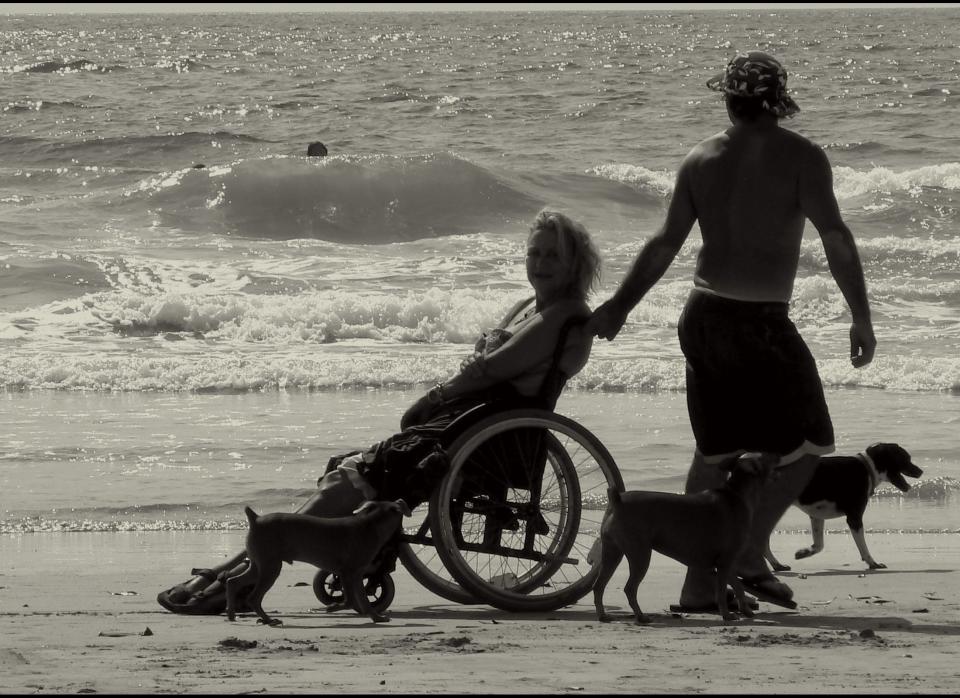
Harmonica Yoga
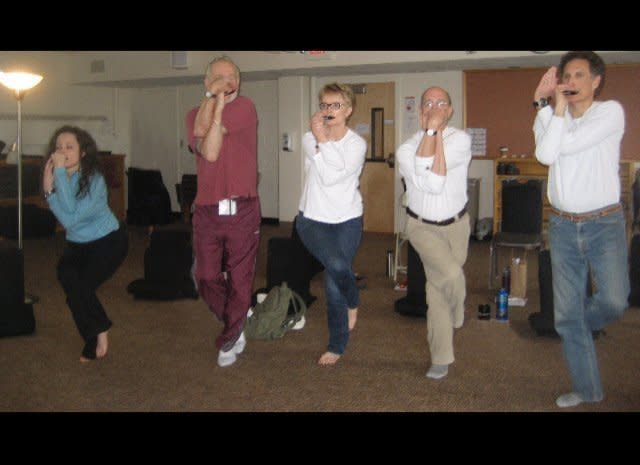
Laughter Yoga

Karaoke Yoga
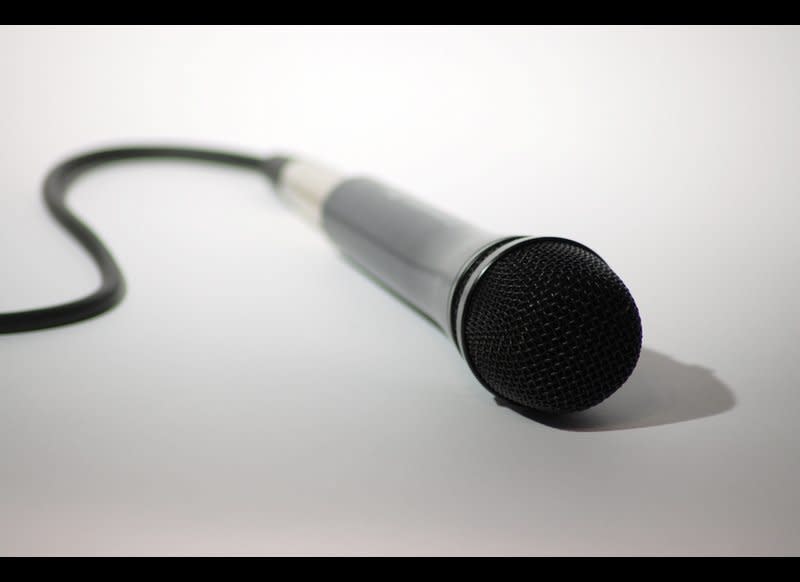
Yoga Raves
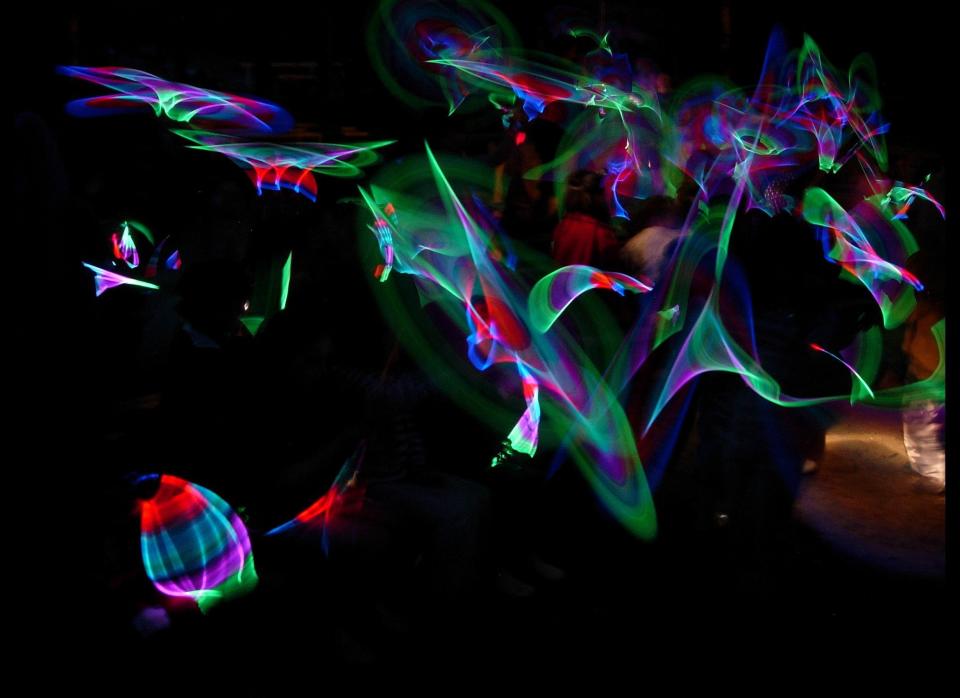
This article originally appeared on HuffPost.

